Kristen Lamb's Blog, page 27
October 2, 2017
Fun is for LOSERS! If You Aren’t Miserable, You’re Doing it WRONG!
[image error]
Today I have on my sassy pants because there’s a messy task ahead. Oh it will be a TON of fun, but messy. We are going to tip over some sacred cows like how fun is evil and misery is awesome.
Granted I am from Texas and have heard stories of those miscreants who’ve sneaked (snuck? snucked?) in under cover of darkness to traipse across pastures littered with steaming cow poo…for the sheer joy of pushing over sleeping bovines.
I, myself, have never indulged in this innocent mischief and remain dubious this “cow-tipping” thing is even real. But supposedly the boogeyman isn’t real and yet–even as an adult–I never sleep with a foot off the edge of the bed.
#AreUCrazy
I can’t see how tipping over innocent cows could be half the fun we hear it is, but I assure you tipping these sacred cows?
LOADS of FUN.
Sacred Cow #1—Fun=Ineffective Time-Waster
[image error]
Remember being a kid and it was actually okay to have fun? Then something weird happened in adolescence and everything got super serious. Teens of course have hormones and the whole “forging a distinctive identity” thing to blame, not to mention *ugh* high school.
But what is our excuse?
As kids we longed to grow up, to be ADULTS, so we could be…FREE.
About that. We humans are weird.
Give us anything that might liberate us and make life BETTER, and we will quickly turn it into a soul-sucking chore. It is simply astounding all the stuff that is fun…that we RUIN.
Bear with me.
We might start at the gym because we know going for a walk is good for us. We also know the gym is climate controlled so we won’t be able to use rain or sun or wind as an excuse to not get some exercise.
We start walking and feeling better. Yay, lower back feels great. Thirty minutes. Happy endorphins and we are very proud of what we have done.
We bask in the glow of our one month of walking five days a week for thirty minutes. In fact, we feel this self-discipline thing really isn’t so hard at all!
THEN…
A personal trainer notices we’ve been at the gym regularly and steps in to…help.
DON’T FALL FOR IT! IT’S A TRICK!
Sacred Cow #2—TRUST the “Experts”
[image error]
Mere moments earlier, we felt AWESOME, only now realize how misguided we were. Oh, thank goodness this expert saved us from destruction!
The trainer, deeply concerned for our welfare tells us with all kinds of statistics and studies that our silly walking is not enough.
No, we must add in weight training. Not just any weight training. No, it needs to be high weight low reps. No, high reps low weight. Scratch that, high intensity!
No! You fool! You are overtraining! You need recovery time. Oh, you took recovery time because you can’t sit on the potty without a Life Alert bracelet? You’re just going to have to suck it up.
Did we mention your diet?
Remember, simplicity is KEY.
[image error]
If you do cardio, eat carbs 90 minutes before aerobic exercise and protein 30 minutes before weight training. Then protein within 90 minutes after doing cardio.
Post-workout, rub your body in coconut oil (unrefined, of course) and stretch but only when Mercury is in retrograde–and within the 123 minute window after cardio–or the stretching and expensive coconut oil all a waste.
Got it? No. Okay, let’s create a plan for you. Mastercard or Visa?
The next thing we know this FUN time at the gym has now turned into a personal hell where we are prodded by macro-nutrients and micro-nutrients all using pointy vitamin-supplement pitch forks.
We cling to that trainer who saved us from our pointless 30-minute walks and toss money at her if only she can help it all make sense (or she will go away)!
More often than not, we return to our blanket fort…where there are snacks.
We adults do this crap ALL THE TIME. Hey I am guilty, too. We know as adults we should want to be better, do better and we start out well-meaning enough.
Yet we fall for it…
Sacred Cow #3—The More It SUCKS the BETTER!
[image error]
From books on “simple home organization” to “better parenting” to “eating healthier” to “financial freedom” we generally tend to fall into this bizarre belief that the more it sucks, the better it must be.
Like the crappier food tastes, the healthier it is!
Right?
Soon, we start shackling ourselves to all kinds of bizarre and UNFUN legalism. We wanted to be free (of extra weight, too much clutter, too many bills).
Yet all these books and courses and virtual tools to save time and make life better…kinda just make us want to drink heavily and OD on brownie batter.
We soon find we avoid the gym we once loved like Ebola, are afraid of our mailbox, and with our spouse and kids? We turn into the HULK only meaner and in yoga pants (because those won’t split when we “turn”).
THIS IS A SPONTANEOUS SCHEDULED FAMILY FUN SESSION AND SO HELP ME YOU BETTER START SMILING OR I…WILL…END…YOU!
[image error]
Hmm, maybe just me.
Why DO We DO This?
Much can be blamed on Western culture (Americans being the most guilty). Many of us are taught from youth that FUN=BAD.
We’re riddled with guilt about pleasure and fun (and sure, we can probably blame those sour-faced Puritans for laying the groundwork).
*stabs Plymouth Rock in my mind*
Yet kids are robbed of recess, daydreaming is forbidden, and only school-sanctioned imaginative activities are allowed (refer to why my son was kicked out of preschool for liking zombies). Put a kid in sports, gymnastics or dance and see how long it takes for all the fun to get sucked right out of THAT.
[image error]
Why does all this happen?
Because fun-stealing is big business if we allow it.
Cruise lines can sell us a package of joy and harmony and relaxation. Then, the pharmaceutical companies step in to sell us the anti-anxiety meds required for taking a whole week off to have…*gulp* fun.
We return to our day jobs and 547 unread emails is our penalty for being so selfish as to believe we might actually need to rest now and again.
Maybe we should buy that app to check messages at sea.
Many Americans proudly wear the “I Haven’t Taken a Day Off Since Y-2K” badge of honor…even though we all secretly hate them and know if they took a little time for fun, they might actually not be such frigging jerks.
*breathes deeply*
[image error]
And Ms. I Never Take Vaca is there to sneer at us for our “weakness.” She embodies FUN! Because the sheer joy of leading the PTA, baking a zillion nut-free GF cookies, and zooming her kids to every social event imaginable is fulfillment in and of itself and all the “fun” required for “good mothers.”
*stabs her in our minds, too*
And Mr. I Never Need Holiday is there at work (where else?). He recommends the Intensive Weeklong Fasting and Time-Management-Leadership-Be-Your Best-Self-in-Less-Than-Nine-Minutes-a-Day-Retreat…which is of course, conveniently offered on-line.
Also, he can reach us every minute of the day via text or email…unlike when we were so naughty as to take that cruise.
It’s madness. I know!
Yet here we are. All staring at each other on the crazy train wondering how the heck we keep meeting again.
Follow the Money
[image error]
Honest truth is authentic fun is not near the moneymaker as the “shill” of fun. Look at all those “activities” I mentioned that should be fun and who’s there to step in? Experts.
Who happen to make money.
Who can help us with our exercise, diet, meditation, and train our kids for the Olympics!
***Even though little Mackenzie just liked doing cartwheels and we thought gymnastics class would be fun—silly us!
When we were kids who simply had FUN, we didn’t count how many minutes of cardio we’d done riding bikes four hours straight. We gave no thought to the carbs or lack of macro-nutrients in that giant cherry Slurpee we inhaled.
Then we grew up and used our larger and more highly developed brains to think all the fun out of well…pretty much everything.
I see this over and over in social media.
The greatest tool writers have been handed to become free, is being used to enslave us.
“Experts” tell us that an author platform is serious business. If we’re having fun, then we aren’t being professional.
[image error]
We need automation and vlogs and podcasts and to be everywhere on every site all the time contributing mind-blowing content for exposure!
*feels dirty inside*
Then there is the gathering emails, decoding analytics, sales strategies, promotional tactics, targeting our market…
Call me crazy, but does any of that sound like ANY FUN? SERIOUSLY! We all started this writing journey because we are the dreamers and find imaginary people more interesting than real ones (because they are). We wanted to write to be FREE!
To have FUN!
Granted, a brand is important and social media is vital, and selling lots of books way more fun than selling no books. But anyone who’s shoveling out manure from one of those sacred cows we tipped?
RUN!
Refuse the Kool-Aid
[image error]
On social media FUN is SUPER effective. People are drawn to it. The world is a dark and dreary place and getting gloomier by the second. Fun stands out.
Authenticity is priceless! We know it when we see it because joy shines bright!
It creates genuine connections (code for relationships). But here is the kicker! Friendship, trust, care, hope, joy and fun cannot be measured in metrics 
September 28, 2017
Writer or Psychopath? Top Reasons Authors are Commonly Mistaken for Serial Killers
[image error]
Writers are different, though maybe you’ve heard you are special…as in “special.” We writers definitely fell off the end of the Bell Curve and probably suffered some head trauma on impact. Which OF COURSE unlocked our inner genius *flips hair*. Oddly, though “normal people” (code for “boring”) often just don’t get us. Heck, often we don’t get us.
I know this is a repost but apparently it is “that time of the month” on Facebook (and Zuckerberg should seriously consider negotiating official FB sponsorship from Midol). Frankly, ain’t nobody got time for that drama.
Especially when there are words to write and characters to torture. So posting this for something FUN.
The world needs more of that, right?
Anyway, I love being a writer. It’s a world like no other and it’s interesting how non-writers are simultaneously fascinated and terrified of us. While on the surface, people seem to think that what we do is easy, deep down? There is a part that knows they’re wrong. That being a writer, a good writer, is a very dark place most fear to tread.
In fact, I think somewhere at the BAU, there’s a caveat somewhere. If you think you profiled a serial killer, double check to make sure you didn’t just find an author.
Hint: Check for empty Starbuck’s cups.
[image error]
A regular person may believe she’s come face to face with a maniac, but blunt truth is most of us gal writers are nerds who get ragged on for not wearing makeup more often. So if you see THIS (image below) probably NOT a psycho, just some poor author who tried an Instagram makeup tutorial…and it all went horribly wrong.
[image error]Writers march to the beat of a different kazoo.
Seriously. I once spent an entire afternoon googling Fort Worth hotels to find the right one with a balcony to toss someone off of. I was like the Goldilocks of murder.
Nope doesn’t face a street.
Not high enough to be fatal.
Don’t want them landing in a pool.
Apparently “normal” people do not do this, which is why being normal is totally boring and for the imagination impaired.
So before friends and family turn you into the FBI, here is a handy list of ways we writers are often mistaken for serial killers.
#1 Serial Killers Writers Need Alone Time
Generally, dealing with the public is only for a purpose (like making others think we are normal). To truly recharge and immerse in the art of what we do, we need to pull back and simply “get away.” Many writers can be found in basements, dark corners of libraries or lurking behind a desk surrounded with bear traps.
#2 Serial Killers Writers Often Hold Down a “Normal” Job
Many writers are also teachers, engineers (or likely married to an engineer—What is WITH that?), lawyers, doctors, or even librarians. We are friendly, polite and on-time and hold down gainful employment. This is what makes writers SO terrifying. You probably work with one.
You might even be married to one.
#3 Serial Killers Writers Can Look Just like YOU
When our book comes out, neighbors will say, “But she seemed so nice and normal. Really polite. Always thought something was off, but writing? Really? Who can ever know these things.”
#4 Serial Killers Writers Understand Law Enforcement
And probably dated it 
September 26, 2017
Invoking the NO! Part 2: Guilt is a Lie & Why Boundaries Benefit EVERYONE
[image error]
Last Monday I posted a blog The Linchpin of ALL Success—Invoking the NO! and I appreciate all the comments. Today I want to address some of what to expect when we make the decision to Invoke the NO, because when we are prepared for what likely WILL happen, we:
a) Will be calmer because we anticipate any attacks.
b) Can make an action plan.
c) Are able to arm ourselves with truth, which will cut away the lies we’ll will hear (from others but also from ourselves).
Why Invoke the No?
[image error]
First of all, if you missed it, hope you will check out the first post on this. But let me lay it down for you this way to make the necessity of NO very clear.
Back in a time long ago before Amazon, HBO and Netflix, humans learned piling rocks around where they lived and slept was a primo plan for keeping out predators and bad guys.
In fact (in large pert due to the lack of Netflix and HBO) humans dedicated a lot of time, energy and thought into better ways to do this rock-piling-thing.
At first they called it Fred, but that didn’t evoke the emotion they wanted to convey and thus Fred became “Wall”, which sounded a tad more intimidating.
Don’t argue. It’s “history.”
Anyway, walls became a HUGE deal. Cities who had them prospered. In fact, the bigger and better the wall, the MORE respect the city garnered from those around them.
Humans who dwelled in places with no walls had a far higher fatality rate due to invaders (human and animal variety), and their life spans were roughly 50.7% lower than those who dwelled inside the protection of a wall.
Those with no wall who did NOT die, had an 89% greater chance of slavery and reported a 99% lower “life satisfaction” rating.
According to my completely fictional yet historically “accurate” statistics, a person had a 76% greater chance of being devoured alive by a lion OUTSIDE a wall compared to those dwelling inside.
[image error]
Outsiders knew better than to %$# with cities with high walls. Namely because %$#ing with people with high walls involved a 123% greater chance of having boiling oil, fiery arrows and diseased animals tossed on you from above.
Thus any strategist with the IQ higher than an eggplant could see that conquest, exploitation, and general naughtiness had a far higher success rate when no wall was involved.
Thus by analyzing the historical and scientific data one can hopefully see a clear pattern.
Walls–>AWESOME
No Walls–> PAIN, SUFFERING, LION FOOD
Shall We Mention Gates?
[image error] Image via Flickr Creative Commons, courtesy of chelmsfordblue
All great walls ALSO needed gates, which was why Og (the one who first came up with plans for a Fred), was promptly fired—as in literally set ON fire—when Og left out a simple but apparently vital detail—a way to get in and out of this new thing known as the newly renamed WALL.
****Upon later review the elders decided to deal more kindly with engineers and “firing” didn’t necessarily have to involve actual fire.
While walls were awesome for keeping out invaders, predators and door-to-door salesmen they also kept out vital ingredients for staying alive, like food, fresh water, and supplies.
Thus gates became an integral and critical part of the wall…but were ALSO fortified in new and improved ways over the ages. My resources indicate the portcullis was the brainchild of one too many family get togethers gone horribly wrong #RedWedding.
What Does this WALL Stuff Mean for ME?
[image error]
From the beginning of time, those who lacked a boundary were preyed upon and enslaved to the agenda of others. This has not changed.
When we fail to set boundaries (a wall) others won’t respect us and we open ourselves up to being chained to the needs, wants, desires and drama of others.
No, we might not get ripped apart by lions, but the PTA is a close enough comparison.
If we previously did NOT have a wall, then decided to build one….
Those who’ve benefitted from taking what they wanted and shackling us to their whims will NOT be happy. Expect this. If we’ve trained others to treat us like a never ending vending machine (though note vending machines are paid money), these folks are NOT going to rejoice when we cut off their unlimited supply lines into OUR resources and energy reserves.
Thus today I am tossing down the gauntlet:
We can be popular or powerful.
Invoking the NO is building a wall, but any superlative wall design also comes with a fortified gate. We can allow folks in and out at appropriate times, meaning no we don’t serve 24 hour Make You Happy Meals.
Those who respect our time, energy, and resources can come and go and get all the goodies that go with honoring boundaries. Those who refuse to get with the plan?
[image error]
Boundaries Benefit Everyone
Seriously, they do! Anything worth having is generally not easy. Boundaries and Invoking the NO! are hard but the rewards are priceless. How?
#1—Boundaries prevent conflict.
[image error]
Why? Because there is a clear line. Like my house has doors and a stranger wandering into my house is legitimately viewed a home invader.
If, however, I dwelled in a lawn chair sheltered by a pool umbrella in the middle of a field, a passerby would have no idea he/she was crossing a boundary. Thus, me shouting I was a victim of a home invasion would be a tough sell.
Too many of us are being worn out over drama and conflict and being pulled at, yet we’re the person dwelling in a lawn chair with a pool umbrella. Sure we want to be angry at the intruder, but we actually are at fault for failing to make the boundary clear in the first place.
Set the boundary and we save precious time, energy and resources with a simple addition of clarity. Refuse to fight battles that can easily be prevented in the first place 
September 22, 2017
Girl Friday: ROAD TRIP! The Holiday Trav-L-Park Writer’s Conference
[image error]
So…Kristen locked all the blog doors. She even locked the blog’s ground floor windows. HOWEVER, she forgot that I am a rock climber! I just did a little dyno, a little manteling, and a little down-climbing, and I was in. And she thought I couldn’t do this on a road trip!
*evil cackle*
Anyway, once I was in, past the lasers and over the alligator traps, I promptly went downstairs and opened the door for Kim, who will be here next Friday…since we now have a new feature: GIRL FRIDAY (well until Kristen figures out how to truly evict us. Squatters are crafty 
September 20, 2017
The Linchpin of ALL Success—Invoking the NO!
[image error]
One major advantage of being older is the blessing of perspective. Us “older folk” have lived enough years to have gained decades of experiences, failures, mistakes, victories, setbacks, trials, and tests. This means we have the benefit of context. Many of us also have a clearer picture of what “success” really looks like. What is important and what’s worth our time and what is not.
Stuff we freaked out over and that was world-ending as a teen? We laugh at now when we see that same drama in our own kids or the children of others.
We may even shake out heads and think, “I wish I would have known this when I was younger.”
Of all the lessons I’ve learned, there’s one that surpasses them all—a linchpin to any kind of meaningful life, love, success, peace or prosperity. Good news is the lesson is simple. Bad news, it’s far from easy.
I challenge you to…INVOKE THE NO!
The Power of NO!!!!
Yes, invoke the NO. NO to the wrong stuff makes room for the YES for the right stuff.
Seriously, give yourself a quota of Nos. Start with 5 and work from there. No to yourself, no to others. The word NO is the key. Yeah, this song below is about pickup-lines in clubs and is cute and I bought it and work out to it and recommend it. It doesn’t specifically apply to our NO lesson, but the chorus is actually highly useful as an ear worm.
Just retool it for your specific needs.
Kristen’s version?
My name is…NO.
My sign is…NO.
My email is…NO.
My best day to bake cookies is…NO.
I gotta let you go. My answer still is no.
Setting Boundaries Using the NO
[image error]
I could and probably will write a whole book on this one day but trust me when I tell you it is impossible to enjoy any kind of success, meaning, joy, peace or prosperity unless we become masters at setting firm boundaries, which again means invoking the NO.
TIME is a treasure, the most valuable possession we have.
[image error]
Every minute a gold coin, every hour a jewel, every week a necklace, every year a crown. We are given this treasure at birth (though we never are aware of the treasure’s actual size). We take time for granted, thus too often fail to guard it with the NO. We give into the easy “yes” which steals our treasure one coin, one jewel at a time.
Then we are clueless as to why we are emotionally bankrupt and have nothing to show for all this work. Truth is there is a HUGE difference between being busy and being productive and that difference is two letters long.
N-O.
We Can’t Have It All
[image error]
Why is saying NO so tough? Because, we are flawed humans who have a tendency to get greedy (including me). We don’t want to believe we really cannot have it all.
Blunt truth time…
“Having it all” is a marketing LIE used to sell us stuff we won’t use, don’t need, can’t afford and frequently cannot even FIND. “Having it ALL” is a tactic to rook us into spending time instead of investing time 
September 18, 2017
Bring on the BINGE! Creating Villains Audiences Can’t Get Enough Of
Many of us have been there. It’s late. We know we have “adulting” to do in the morning (which is in two hours). Our sensible self has been nagging us to get our @$$ to bed so long we smothered it with a pillow around midnight. Whether it’s a book, or Netflix or HBO or FX…we tell ourselves just one more episode. One more chapter. We can stop binging any time we want.
Suuuuuure…
Uh huh.
What is it that makes us lose all sense of responsibility and common sense when gut-hooked by these stories? By and large…VILLAINS.
But what goes into creating a truly terrifying villain? Or a villain who steals the show? Perhaps a villain who gains more fans than the HERO?
[image error]
Excellent question.
To be blunt, villains are the soufflé of the character world. Preparation must be handled with utmost precision and care or it all goes FLAT.
Villains are among the most popular and memorable characters in all of storytelling history from Grendel to Darth Vader to Ramsay Bolton.
Yet, though these characters are extremely powerful, they’re (strangely) ridiculously tough to write. Villains can too easily become one-dimensional mustache-twirlers, too dumb to live, too boring to care, or just plain silly and unsympathetic.
I.e. Kylo-Ren, or as I like to call him, “Darth Emo”.
But, when writers do things right? It is the glorious Villain Soufflé writers are proud serve and readers/audiences cannot wait to devour….and then flat out stuff themselves half to death.
[image error]
Face it, the hero is only as good as his/her opposition. The better the villain, the better the story. The better the story, the deeper the GUT HOOK. Want an audience who binges on your stories? There are many ways to do this, but nothing works quite like…
VILLAINS.
All righty, so today? Three critical ingredients for the perfect villain. Even though the villain character has limitless variations, we can at least address some NECESSARY ingredients that cover most every memorable villain.
Sort of like if you wanna make banana pudding, bananas are kind of a big deal. Yes, there are infinite variations of banana pudding but some ingredients have to be there or we don’t have banana pudding, we have something else entirely.
Villains are much the same.
Ingredient One—“Noble” Qualities
[image error]
No blog worth its salt can discuss legendary villains without at least a nod to Game of Thrones. In fact, I could blog on villains for the next year using GoT and barely scratch the surface (of course it helps that George R.R. Martin has a cast of 2,312 characters).
Ah, Cersei though.
How we love to hate her. Yet, why does she resonate? Why does her character strike such a visceral chord? What makes her dimensional and real instead of a paper doll mustache twirling caricature?
First, she has “noble” qualities. She LOVES her family (her brother perhaps a bit too much for our comfort, but whatever). She’s a mother and will do anything for her kids to help, assist, promote, protect or even AVENGE them.
Literally.
She is fiercely devoted to her children (even a child as terrifying as Joffrey) and heaven help anyone who messes with her cubs. She’ll melt you with wildfire…then drop a city on you.
For reals. She did it
*Cersei drops mic then half of Westeros*
[image error]
Most of us have kids, family, friends, loved ones, or even pets who we’d turn insta-psycho to protect…which is why we connect with Cersei. We share this powerful emotional vector which makes us hate her then root for her then hate ourselves for rooting for her.
Ingredient Two—A Sympathetic Viewpoint
Believe it nor not, Cersie possesses a highly sympathetic viewpoint. She’s a woman in a man’s world. Of all the Lannister children, SHE was the only one who paid attention, and who outpaced her brothers by a million miles regarding Rule with an Iron Fist/Throne 101.
SHE was the Lannister most qualified to rule, but instead, her father hands her off like chattel to marry a fat, sloppy, philandering joke of a leader, King Robert Baratheon (which explains a lot of why she chose Jaime *shivers*).
[image error]
And it is this ever-pervasive powerlessness generated by the world she had no choice being born into that pisses her off more than a little (and rightfully so).
Her one brother Jaime has more interest in prancing around the country playing knight when he’s not in bed with her (*twitches a tad*) and the other brother Tyrion–in the beginning at least–is a drunken, womanizing, hard-partying dwarf she blames for her mother’s death.
She’s surrounded by men more “qualified” to rule from the Iron Throne and by “qualified” I mean they have man parts. The lion’s share of Cersei’s insane desire to gain the throne for one of her sons can be largely attributed to the fact that she believes she can rule vicariously through them and the requisite “man part.”
Of course after Season Six she’s there to blow $#!& up and she’s all out of children. High Sparrow is now a smoking crater glowing hotter than a Cherynobyl Ferris Wheel.
And that “Rule by Man Part Mandate”? She melted that, too…
[image error]
The simple lesson is if Cersei had been born a man instead of a woman in a man’s world, a villain never would have manifested to begin with.
Remember this when crafting your villain.
In fact, though often we loathe Cersei, a lot of us gals can kinda sorta sympathize. Some of us wouldn’t have minded a few caskets of wildfire to unload on the last sales meeting.
You know the one.
That meeting where the boss’s drinking/golfing buddy who’s never had an original thought in his life stole your idea then landed your promotion solely because he possessed Mystical Man Part Powers.
Yeah.
And for the guys? Despite the Mystical Man Part Power, you have your own version of this “powerless and %$#ed over” scenario, which brings us to…
Ingredient Three—The Villain is the Hero of His Own Story
[image error]
Moving away from Game of Thrones…. *pries fingers loose*
Why do we SO love Loki? Because Loki kind of has a good point and is the hero of his own story. In ways he is the male version of Cersei.
Bear with me.
For those who’ve slept since Thor released in 2011, Thor is the movie where we first met the Tom Hiddleston Loki we all know and love and hate…but mostly love.
In Thor, we’re tossed into a tale as old as time—sibling rivalry.
In the movie, Odin has created a fragile truce between Asgard and the Ice Giants. When the Ice Giants make a sudden play to retrieve the Casket, Thor (about to ascend as the new king) directly disobeys his father’s orders and runs off full of himself, all half-cocked and ready to do some damage.
Thor has zero concept of this little thing called “consequences.” Loki, however, does appreciate consequences both for Thor and the realm and his family, and is actually a far better choice to rule Asgard.
Loki, ever loyal, genuinely loves and cares about Thor (and the kingdom), and goes along with Thor’s raid on the enemy…all the while trying to talk Thor out of being a dip$#!t.
Alas, Thor’s asshattery creates a mass mayhem and places the kingdom in peril. Thor makes enough of a mess that Odin essentially puts Thor in the Asgardian version of TIME OUT—which apparently involves New Mexico.
This “punishment” only further demonstrates Odin isn’t truly punishing Thor, because everyone knows Lubbock, Texas is the far superior location for an Asgardian TIME OUT if Odin was serious about making Thor miserable.
[image error]
Odin also decides to take a nap instead of putting Loki in charge, even though Loki’s still left to clean up the giant mess Thor made.
Giant mess, get it? I kill myself. Moving on…
In the midst of all this, Loki discovers his whole life is a lie, including his identity, and he experiences betrayal coupled with personal extinction.
He resents Odin for a vast number of legit reasons, but mostly he hates Odin for ever considering a selfish buffoon like Thor to rule Asgard. Thus, Loki sets out to prove his worthiness to his real father and place the realm under New Management.
[image error]
With all Loki has endured, how he’s been betrayed, and his goal that the realm be ruled by “cooler” heads—pardon the pun—we the audience find it tough not to see Loki has some seriously valid gripes.
We see he really IS the hero in his own story.
In the End
[image error]
I’ve given y’all three basic, but critical ingredients for a villain readers will love to hate or maybe even love. Villains are incredibly fun to write, but since they’re by nature unstable, volatile and often combustable, they need to be handled with care.
I’m teaching a brand new class Villains and Anti-Heroes TOMORROW and that’s where we get time to deep dive the really cool stuff, so I hope you will join me! I have been STOKED to teach this more advanced class and had to move it due to losing my voice last week, so y’all got another shot at signing up (recording is free with the class if you can’t make it in person).
I LOVE HEARING FROM YOU! And I am NOT above BRIBERY!
What are your thoughts? Does this help you understand how to give depth to your villains? Who are some of your favorite villains from the page or even the screen, small or big?
Which villains resonated with you and WHY? Which villains do you remember years later? You never get tired of re-watching the show or movie or rereading the book? What villains make you binge watch? Trade gas money for Netflix?
What do you WIN? For the month of September, for everyone who leaves a comment, I will put your name in a hat. If you comment and link back to my blog on your blog, you get your name in the hat twice. What do you win? The unvarnished truth from yours truly. I will pick a winner once a month and it will be a critique of the first 20 pages of your novel, or your query letter, or your synopsis (5 pages or less).
We are in the process of moving classes around due to the two MONSTER hurricanes so a fresh class list will be available next post. You can also dash over to W.A.N.A. International to check out what’s coming up and get your spot!
September 15, 2017
Putting the Fan BACK in Fantasy—Getting Past Ye Same Olde Same Olde
I’m Kim Alexander back to talk about fantasy world-building. This time I’m looking at those writers who make every heroine in their stories a—wait for it—princess.
[image error]
This is different from Chosen One Syndrome, because when it comes down to it, every protagonist is a chosen one; you’ve chosen to write about them. In this installment, I’ll be talking about working for a living. (More about Chosen One Syndrome in an upcoming blog post!)
When we create fantasy lands like, oh, “Gondfloria” (pop. 2 mill. unicorns), it’s easy to use the default: faux medieval Europe. If we have a bunch of forbidding, craggy, windswept mountains with impenetrable fortresses (I always feel like it should be ‘fortressi’ even though I know better) atop them, the next thing we’re gonna do is make our main character a princess. (Or a prince, I don’t know your life.)
I’m here to suggest to be brave and try something else. I’m not saying we have to make our enchanted land of Gondfloria into an Arctic survivalist encampment. But, we need to think a little bit outside the box…okay, dungeon, especially if the dungeon is full of Northern European royalty.
(Full disclosure: the main character of my novel, The Sand Prince, is – as the title suggests – a prince. But I hasten to add that he’s astonishingly bad at it.)
Sometimes it seems like every fantasy novel I pick up is crewed by the same group:
The sullen yet hot warrior who is certainly hiding a secret (it probably has to do with sex)
The sassy thief
The wise elder (also a thief, possibly retiring, clearly not going to make it to the sequel)
And of course our hero, the member of nobility who under the cover of darkness runs with a bad crowd because Daddy Issues.
Any of them may be masquerading as the opposite gender because it’s…daring. My money is on the sassy thief.
[image error]
Don’t any of these people have jobs? And no, I’m not counting ‘thief’ as a job. You can’t put it on a resume unless you’re actually applying to be a thief.
Even if we’ve decided it’s written in stone that Gondfloria has forests and castles and bears, we can still explore the lives of people living there without falling back on ‘princess’ or ‘thief.’
Here are a few suggestions, on the house: bear wrangler, bee keeper, lute carver, magical bee keeper (the bees, not the person), cook, fixer for the local mob boss, mob boss, magical bee keeper (the person, not the bees – gods, keep up!), innkeeper, wench (if you have an inn, you’ve got to have a wench; I don’t make the rules), bard, dog boy, horse girl, and then way down at the bottom, thief, and finally, princess. You’re welcome.
[image error]
Look, we want our story to stand out in the enormous ocean of similarly themed and titled books. We can do that by either taping a $20 bill to the inside cover of each and every one…or by making it unique.
I look forward to reading your take on a hot yet sullen magical bee keeper who lives in the misty woods of Gondfloira. Feel free to get on your magical sassy pants and sprinkle some flash fiction in the comments. Also any suggestion for other cool roles (characters) who’ve been forgotten, overlooked, or given little or no love. Maybe one not yet thought about?
Oooooh, extra XP points!
Unicorn trainers? Those suckers are magical so surely they could be house-trained right? Dude in charge of the “Pigeon Messaging Service” that later was forced into rebranding and a name change because PMS a really bad name for a business in communication (one not involving knives and chocolate). Use your imagination! ALSO!
Are you tired of ye same olde same olde? Losing that loving feeling for fantasy because, when it’s all the same, that is well, to be blunt, the OPPOSITE of fantasy?
Next time: The Chosen One, or, It is foretold that you and you alone will fix this coffee maker and save mornings for all of Gondfloria!
***
I love hearing from you!
For the month of September, for everyone who leaves a comment, I will put your name in a hat. If you comment and link back to my blog on your blog, you get your name in the hat twice. What do you win? The unvarnished truth from yours truly. I will pick a winner once a month and it will be a critique of the first 20 pages of your novel, or your query letter, or your synopsis (5 pages or less).
NEW CLASSES FOR SEPTEMBER AND MORE!
All classes come with a FREE recording!
We’ve added in classes on erotica/high heat romance, fantasy, how to write strong female characters and MORE! Classes with me, with USA Today Best-Selling Author Cait Reynolds, award-winning author and journalist Lisa-Hall Wilson, and Kim Alexander, former host of Sirius XM’s Book Radio. So click on a tile and sign up!
(If you are getting this via email, open the blog post to see all the options and sign up!)
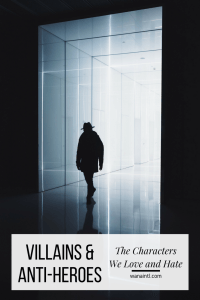 Villains & Anti-Heroes: The Characters We Love and Hate. $45.00 USD. Tuesday, September 12, 2017. 7:00-9:00 p.m. EST. Click the image to register!
Villains & Anti-Heroes: The Characters We Love and Hate. $45.00 USD. Tuesday, September 12, 2017. 7:00-9:00 p.m. EST. Click the image to register!
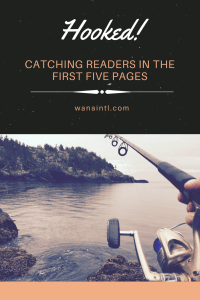 Hooked: Catching Readers in the First Five Pages. $40.00 USD. Thursday, September 14, 2017. 7:00-9:00 p.m. EST. Click the image to register!
Hooked: Catching Readers in the First Five Pages. $40.00 USD. Thursday, September 14, 2017. 7:00-9:00 p.m. EST. Click the image to register!
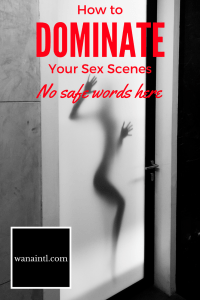 How to Dominate Your Sex Scenes (No Safe Words Here). $45.00 USD. Wednesday, October 11, 2017. 7:00-9:00 p.m. EST. Click the image to register!
How to Dominate Your Sex Scenes (No Safe Words Here). $45.00 USD. Wednesday, October 11, 2017. 7:00-9:00 p.m. EST. Click the image to register!
 Painting With Words: Using Description and Sensory Details. $40.00 USD. Saturday, Monday, October 9, 2017. 7:00-7:00 p.m. EST. Click the image to register!
Painting With Words: Using Description and Sensory Details. $40.00 USD. Saturday, Monday, October 9, 2017. 7:00-7:00 p.m. EST. Click the image to register!
 Social Media for Writers. $35.00 USD. Thursday, September 21, 2017. 7:00-9:00 p.m. EST. Click the image to register!
Social Media for Writers. $35.00 USD. Thursday, September 21, 2017. 7:00-9:00 p.m. EST. Click the image to register!
 Blurb Writing Blows - But, It Doesn’t Have To. $45.00 USD. Friday, September 22, 2017. 7:00-9:00 p.m. EST. Click the image to register!
Blurb Writing Blows - But, It Doesn’t Have To. $45.00 USD. Friday, September 22, 2017. 7:00-9:00 p.m. EST. Click the image to register!
 Turn Your Passion Into A Business: Making Money As A Writer. $40.00 USD. Monday, September 25, 2017. 7:00-9:00 p.m. EST. Click the image to register!
Turn Your Passion Into A Business: Making Money As A Writer. $40.00 USD. Monday, September 25, 2017. 7:00-9:00 p.m. EST. Click the image to register!
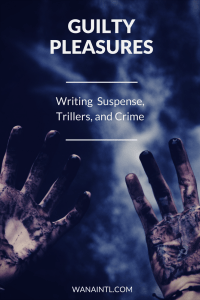 Guilty Pleasures: Writing Suspense, Thrillers, and Crime. Tuesday, September 26, 2017. 7:00-9:00 p.m. EST. Click the image to register!
Guilty Pleasures: Writing Suspense, Thrillers, and Crime. Tuesday, September 26, 2017. 7:00-9:00 p.m. EST. Click the image to register!
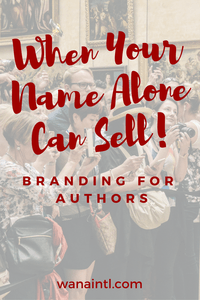 When Your Name Alone Can Sell: Branding for Authors. $35.00 USD. Thursday, September 28, 2017. 7:00-9:00 p.m. EST. Click the image to register!
When Your Name Alone Can Sell: Branding for Authors. $35.00 USD. Thursday, September 28, 2017. 7:00-9:00 p.m. EST. Click the image to register!
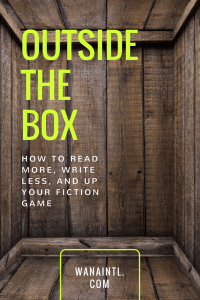 Outside the Box: How to Read More, Write Less, and Up Your Fiction Game. Friday, September 29, 2017. 7:00-9:00 p.m. EST. Click the image to register!
Outside the Box: How to Read More, Write Less, and Up Your Fiction Game. Friday, September 29, 2017. 7:00-9:00 p.m. EST. Click the image to register!
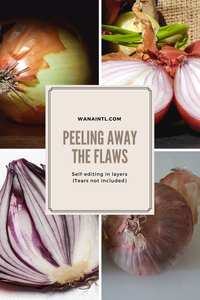 Peeling Away the Flaws: Self-Editing in Layers. $40.00 USD. Saturday, September 30, 2017, 2:00-4:00 p.m. EST. Click the image to register!
Peeling Away the Flaws: Self-Editing in Layers. $40.00 USD. Saturday, September 30, 2017, 2:00-4:00 p.m. EST. Click the image to register!
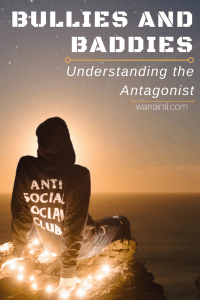 Bullies and Baddies - Understanding the Antagonist. $50.00 USD. Tuesday, October 3, 2017. 7:00-9:00 p.m. Click the image to register!
Bullies and Baddies - Understanding the Antagonist. $50.00 USD. Tuesday, October 3, 2017. 7:00-9:00 p.m. Click the image to register!
September 13, 2017
There & Back Again—Using Distance to Up the Story Stakes and Pace
[image error]
It’s Squatter’s Rights Wednesday with me, Cait Reynolds. Today, we are going to go the distance. Literally. No matter what genre we write, our characters generally go places. The physical distance between these places impacts the timelines of our stories, pacing, and tension. Distance, great or small, can also be used to create atmosphere or to illustrate differences between characters.
But, before we get too much farther (ha ha, pun fully intended), here is the requisite photo of Denny Basenji, who is determined to go nowhere and do nothing.
[image error]
GPS, Equipages, and Transporters
Like I said, it doesn’t matter what genre we write. Every story takes place in a…well…place. Whether it’s another planet, a fantasy realm full of dragons, Regency England, or today’s Los Angeles, distance plays a part in shaping and defining the story.
Let’s tackle the easy stuff first. When we write about anyplace on planet Earth, all we have to do is use Google Maps to get a sense of location, geography, nearby locales, and distance (by planes, trains, and automobiles…and bikes and feet).
I generally keep a little written note of the locations in my story and how far from one to the other. It’s quick a quick reference guide for me as I write, and it eventually helps my editors and proofreaders ensure consistency.
Staying on planet Earth but going back in time, we are still dealing with the same locations (for the most part), so Google Maps is still our friend.
However, now, we have to add in another layer: transportation. Whether it’s a pilgrimage on foot, the complex transportation logistics of a Crusade, taking the carriage to the ball, or crossing an ocean or continent using steam-powered engines, the way our characters get places must be factored into the overall timeline and plot.
But…how exactly do we figure out how long it would have taken a farmer’s cart with two old horses to go twenty miles versus a smart little phaeton with a pair of bright, brisk ponies?
Ah, hello, Google, my old friend. I’ve come to talk with you again.
No, seriously, you can google that stuff. It might take a little bit of digging (depending on how complex the logistics or how detailed you want to get), but the information is out there.
To prove my point, I just typed in, “average travel speed by phaeton and ponies” on Google and came up with a wealth of information about travel speeds and terrains (in both miles and kilometers!). If I really wanted to nail the exact amount of time it would take Mrs. Gardiner from Pride and Prejudice to go around the 10 miles of Pemberley’s Park in the phaeton, I would probably spend about twenty minutes to half-an-hour digging through Google results.
For science fiction and fantasy, we get to create the rules, but then, *sighs* we then have to play by them. We can create any alien planet or mist-ringed elven realm we want, but as part of basic world-building, we must actually build the world.
[image error]
Look at classics like Dune and Lord of the Rings. Herbert has very specific rules and details about space travel and distance between Fremen enclaves on Arrakis. In LOTR, Tolkien provides perhaps the most perfect example ever of using geographical distance to create tension and manipulate the pacing of the plot.
[image error]
For science fiction, it’s worth doing a little Google, Wikipedia, and science magazine website digging to get a basic understanding of the distances between planets, solar systems, and galaxies – and, how long it takes to travel between them in lightyears. Keep a list of every space station, planet, and outpost, and their distances from each other.
We can talk about warp engines and wormholes all we want in science fiction, but we need to keep it consistent. If we get our characters into a situation where the only way out is to go to warp 10, but the scale only goes up to warp 9.9 (looking at you, TNG *wink*), then, we can’t just wave a magic wand and have the raven-haired, emerald-eyed, 22-year-old engineering ensign with a tragic past suddenly come up with a way to achieve warp 10.
This is a direct violation of Lamb’s Law of Coincidences: You can use all the coincidences you want to get characters into trouble, but you can never use it to get them out of it.
In fantasy, the same rules apply. I would even go so far as to draw what I like to call a “stick-figure map.” That’s a polite way of saying a bunch of blobs and dots on a piece of paper with arrows between the dots indicating distances between cities, kingdoms, continents, etc.
Magical transport needs rules, just like sci-fi transport. Treat dragons like horses: how fast can they fly, for how long, are there different types of dragons that go at different speeds?
Personally, all my dragons come with a V8 standard.
Polite nothings about the roads and the weather.
[image error]Conflict! 
September 11, 2017
Want to Reach Your Dreams? 3 Simple Ways to Ignite Your MOJO!
[image error]
It doesn’t matter what area of life we long to improve, mindset is absolutely critical. Where we set our sights? That’s where we will go. But I get it, life is exhausting. Many of us are still on summer mode, perhaps struggling to get in gear and on a schedule.
The magic has fizzled and our flame has all but gone out. I feel your pain *fist bump* That’s why today we’re gonna dive into the deep and explore three ways to reignite that MOJO! Mojo…you know. Magic, passion, story sorcery?
That thing your kids probably drown in Cheerios and milk over summer vaca OR you put it someplace you’d remember where you put it? Yes, that.
It’s cool. You’ll be all right.
First, an illustration 
September 8, 2017
The Art of Story Seduction—From Spark to Romance, Climax to Commitment
[image error]
What makes the difference between a meh novel and one we fall head over heels in love with regardless of genre? Good question and it sure would make our job easier if there existed one answer.
Though there isn’t one answer there’s a list of pretty good answers, thus for this post and the sake of brevity, we’ll pick one. Today, I posit that the reader, upon page one, is testing a potential relationship. Kinda like dating.
We (readers) BOND to the great stories much the same way we bond in human relationships. Think about it.
We even admit to this all the time without truly noting what we’re saying, “OMG, I fell in LOVE with that book! I LOVE that character!” etc.
When we authors roll with this metaphor, our job as storytellers becomes far simpler (though simple and easy are not the same thing).
Attraction
[image error]
I teach a class called Hooked–Your First Five Pages (and offering it again) because those initial pages are critical. It’s like meeting a member of the opposite sex and noticing something that makes our heart flutter, that propels a longing to know more.
A vast majority of relationships start with this kind of heart-fluttering spark, though granted there are relationships where there was nothing/nada in the beginning, and, over time, something surfaced.
This happens in fiction though it’s rare. Every person who has ever recommended Girl with the Dragon Tattoo to me has told me essentially the same thing, “Oh the first hundred pages will bore the paint off the walls, but if you get past that….it’s AWESOME.”
Ok. I’m good, thanks. Not picking on this book, but just not my beer. Sorry.
I’m glad he has a great personality…. *looks for exit*
OPW versus NPW
Though not all relationships begin with an instant spark, it’s pretty amazing to have (and ideal, too). In fiction it is no longer optional. In a what I call the NPW (New Publishing World) we no longer have the luxuries of the OPW (Old Publishing World).
In the OPW, only so many authors were ever published. Discoverability wasn’t a nightmare. The competition was finite.
In the NPW? We gotta have that love-at-first-sight or the browsing reader will simply pass after glancing at the sample pages and move on until something sparks.
Story IS Seduction
[image error]
All righty, so sparks are great but not nearly enough if nothing catches fire. Before Hubby, I had more than my fair share of bad dates which I want to use for the purposes of illustration.
Nothing Ned
[image error]
When I was 20 a ridiculously hot Marine asked me out and he wasn’t gorgeous…he was breathtaking. Just looking at him made my knees weak…and then I went out with him.
I’m not picking on Marines because I know plenty who are brilliant, but this young man was not one of them. Though I think he was likely the most handsome man who’d ever asked me out, it was one of the most painful dates of my life. Agonizing might be a better word, namely because I find intellect attractive and this guy was about as smart as a tomato plant.
During the meal, I found myself wondering if he’d start leaning toward the light, postulating he might be able to photosynthesize his own food. Was the steak he ordered even necessary?
Yes, I know. Not a very nice thing to think but I was only twenty. Gimme a break!
And maybe he wasn’t dumb and I simply assumed this because I was young and dumb, myself. Perhaps he was nervous or shy. But what killed the spark was he was a blank, a Nothing Ned. He parted with nothing of his own.
Me: *eagerly smiling* So, you like to mountain bike?
Him: *shrugs* Not really.
Me: *still perky* Okay, you have hobbies?
Him: *makes face* Nah. Not so much.
Me: *dying a little inside* Where are you from?
Him: *chews* Texas.
Me: *feeling the tailspin, reaching for anything* What music do you like?
Him: *butters more bread* I dunno. Really don’t listen to music.
Me: *wanting to commit Seppuku with sorbet spoon* So what do you do?
Him: *shrugs again* A lot of things.
Now maybe this guy was a genius and a layered and dimensional human being with loads of cool hobbies we could have bonded over. But, because on this ONE date he parted with NOTHING of himself, he came across as boring, dull, and frankly dull-witted.
Was he? No idea.
I didn’t have the bandwidth to endure another painful evening like that to find out. The spark of his looks were enough to get me to dinner, but nothing ignited because he refused to part with anything personal to act as tinder to make use of the spark.
Then we have the other kind of date. Again, really attractive guy, enough to spark a date and by the end of the evening…I wanted to throw myself out of a moving car.
Let’s meet…
Over-Sharing Oliver
[image error]
Over-Sharing Oliver was the opposite of Nothing Ned and he spent hours using dinner as his personal confessional/therapy session relaying in vivid detail everything that had happened to him from childhood, the deets of his nasty divorce and why he hates and doesn’t trust women (but thinks I might be different—thanks) and on and on about himself.
HIS likes, accomplishments, job, hobbies, interests, opinions and thirty minutes into this ordeal I seriously wondered why the heck I was even THERE.
I felt like a prop whose sole purpose was so he didn’t look stupid eating at a restaurant and talking to himself (though he was essentially doing just that).
The Story as Romance
[image error]
When we create our characters we must be vigilant to avoid the polar opposite ends of the backstory spectrum, and it IS a balancing act.
On one side the character can be a Nothing Ned. We fail to explore and articulate the backstory of WHO this character is and why he/she is a certain way. How do they see their world? Why do they act/react the way they do?
Dramatic tension cannot exist in a vacuum. There is nothing to emotionally ignite the relationship between the reader and our story.
Conversely, when we create the backstory, it doesn’t belong vomited on the reader all at once like Over-Sharing Oliver. As we talked about on Tuesday, mystery is a good thing. It keeps readers turning pages.
There is a reason the final big ending of a novel is called the climax *wink, wink, nudge, nudge*.
[image error]
The reader and story bond in relationship that grows and intensifies with every struggle, setback and finally a triumph (climax)…which can be a betrayal (tosses book across room), an unsatisfying letdown (no more books by THAT gal), satisfying (cool, maybe get his next book), or a mind-blowing transcendent experience (in love, committed forever and no author does it better).
How any novel ends largely depends on the writer’s skills at wooing the reader then making them see stars 



